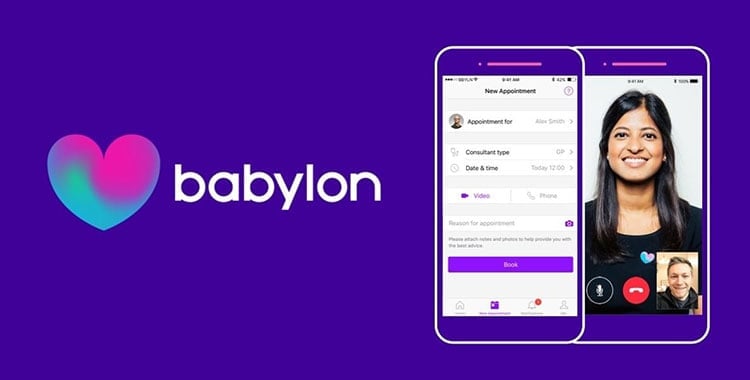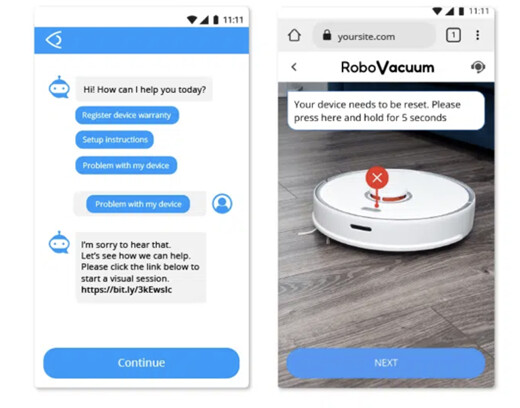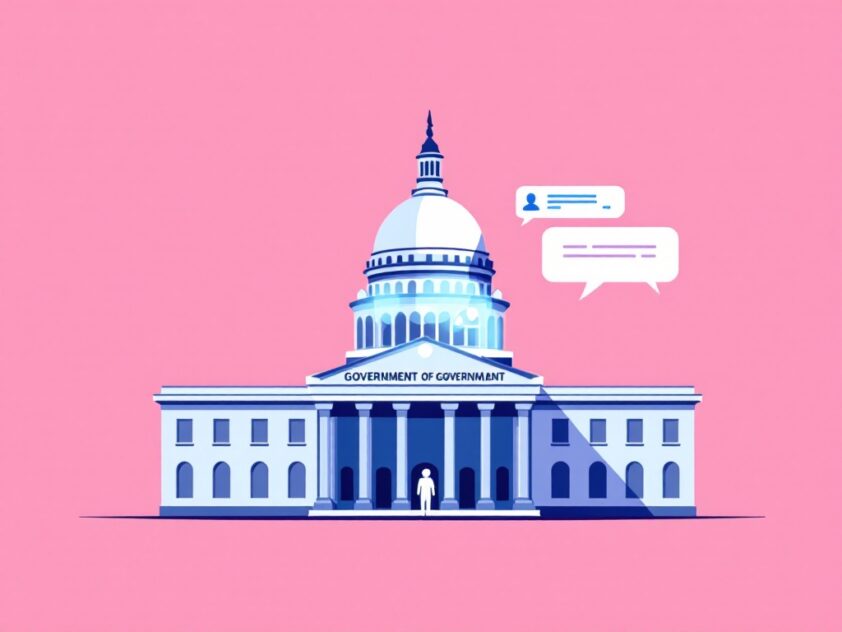Picture calling your local government office at 3 AM to check the status of your building permit or trying to find answers about property taxes during a holiday weekend. Until recently, these scenarios would have meant waiting hours or days for assistance. Today, thanks to groundbreaking developments in artificial intelligence, government chatbots are transforming public service delivery, making round-the-clock assistance a reality for citizens.
Gone are the days of lengthy wait times and limited access to government services. These AI-powered digital assistants are revolutionizing how citizens interact with public institutions, handling everything from routine inquiries about tax deadlines to guiding residents through complex permit applications. Some government chatbots are already processing over a million citizen interactions monthly, demonstrating their growing role in modern public service.
This transformation goes far beyond just providing 24/7 support. Today’s government chatbots are breaking down traditional barriers to access, offering multilingual support for diverse communities, and collecting valuable data that helps agencies better understand and respond to citizens’ needs. They’re proving particularly valuable for disadvantaged groups who may have limited transportation options or inflexible work schedules.
This comprehensive guide explores how these digital assistants are reshaping government services, examining their impact on efficiency, accessibility, and citizen engagement. From streamlining permit applications to providing instant emergency updates, you’ll discover the innovative ways chatbots are making government services more responsive and citizen-centric than ever before.
Chatbots have an impact on public values and public value creation, particularly by improving citizens’ access to public services and public service providers’ insights into citizens’ needs.
Anna Grøndahl Larsen, Research Scientist at SINTEF Digital
Whether you’re a citizen wondering how these tools can make your life easier or a public servant interested in modernizing service delivery, this article provides valuable insights into the future of government services. Discover how artificial intelligence is making government more accessible, efficient, and responsive to citizen needs than ever before.
Enhancing Public Health with Chatbots

Artificial intelligence-powered chatbots are transforming healthcare access by offering immediate medical guidance when traditional appointments are delayed. These digital health assistants serve as the first contact, helping patients determine whether they need urgent care or can manage their condition at home.
Babylon Health’s chatbot service has successfully reduced unnecessary doctor visits while ensuring patients receive appropriate care guidance. The platform uses sophisticated AI to assess symptoms, provide reliable health information, and direct users to the most suitable level of care – whether that’s self-care advice, a virtual consultation, or an emergency room visit.
The impact on public health services has been significant. By handling routine inquiries and initial assessments, these chatbots help decrease waiting times for those who truly need in-person medical attention. For instance, a patient wondering about a mild headache can receive immediate guidance about hydration and rest, while someone describing symptoms of a more serious condition will be promptly directed to emergency services.
Access to medical advice has also improved dramatically, particularly for underserved communities. The 24/7 availability of chatbots means people can seek guidance at any hour, addressing health concerns that might otherwise go unchecked due to work schedules or transportation barriers. This accessibility has proven especially valuable for parents of young children and those managing chronic conditions who need frequent reassurance about symptoms.
However, these digital tools are designed to complement, not replace, traditional healthcare services. When the Babylon chatbot identifies potentially serious symptoms, it ensures users are quickly connected with appropriate medical professionals. This careful balance between AI assistance and human expertise helps maintain high standards of patient care while optimizing healthcare resources.
ChatGPT and public health chatbots will advance in ways beyond our present imagination, and they carry a huge potential for democratizing knowledge and reducing inequalities in access to evidence-based health information.
Duke Global Health Institute
The integration of chatbots into public health systems represents a significant step forward in making healthcare more accessible and efficient. As these technologies continue to evolve, their ability to provide accurate, timely medical guidance while reducing strain on healthcare systems will only improve, ultimately leading to better health outcomes for communities worldwide.
Improving DMV Services with Chatbots
Departments of Motor Vehicles (DMVs) across the nation are plagued by long wait times and congested offices, with some customers enduring up to four hours to complete simple transactions. California residents, for example, waste an average of 50 minutes per visit, contributing to widespread dissatisfaction with DMV services.
Modern chatbot technology offers an elegant solution to these persistent problems. AI-powered chatbots can handle routine inquiries and basic services, from license renewals to registration updates, providing instant assistance without the need to visit a physical office.
These digital assistants excel at streamlining common DMV transactions that traditionally create bottlenecks. For instance, when handling license renewals, chatbots can verify identity, process payments, and guide users through required documentation—all within minutes rather than hours. The technology’s ability to manage multiple conversations simultaneously means no more standing in line or waiting on hold.
The benefits extend beyond just saving time. Chatbots provide consistent, accurate information 24/7, eliminating the frustration of limited office hours or unavailable staff. They can communicate in multiple languages, making DMV services more accessible to diverse populations. For routine questions about fees, requirements, or procedures, these automated assistants deliver immediate answers without burdening human staff.
States implementing DMV chatbots have seen remarkable results. Montana’s DMV, for example, deployed a chatbot system that dramatically reduced their call wait times from two hours to just two minutes. The automated system successfully handled over 400,000 customer service conversations, effectively serving nearly half of the state’s driving-age population while freeing up staff to focus on more complex issues requiring human expertise.
Chatbots for Housing Services Assistance
Artificial intelligence is transforming modern housing assistance. AI-powered chatbots simplify the complex world of housing applications and services, offering 24/7 support to those in urgent need.
In the United Kingdom, housing associations use sophisticated chatbots to guide applicants through social housing applications. These digital assistants break down complex eligibility requirements into simple questions, easing the process for those dealing with housing instability.
Housing service chatbots can translate questions and responses in multiple languages, ensuring accessibility for diverse populations. This feature is particularly valuable in metropolitan areas where residents may face language barriers.
Beyond basic form-filling, AI assistants help recently-evicted residents understand their rights and available support services. They quickly assess eligibility for emergency housing, explain documentation requirements, and connect individuals with support workers when human intervention is needed.
The technology is especially useful for time-sensitive situations. Displaced residents can start their housing application process immediately through chatbot interfaces, potentially reducing the time spent in temporary accommodation.
AI-powered chatbots and virtual assistants have the potential to revolutionize tenant support and engagement in the UK social housing sector. They offer numerous benefits, such as round-the-clock availability, immediate responses to queries, handling a large volume of inquiries simultaneously, and automation of routine tasks.
Housing Sector UK
These systems adapt to each applicant’s unique circumstances. Whether someone needs information about local housing options, help with documentation, or guidance on appeal processes, chatbots provide personalized assistance while maintaining consistent accuracy.
Leveraging Chatbots for Civic Engagement
Local governments have discovered a powerful new tool for strengthening democracy—AI-powered chatbots that make civic participation more accessible and meaningful than ever before. Through these intelligent digital assistants, cities can engage with residents 24/7, gathering valuable feedback that shapes policies and improves public services.
According to research from Harvard’s Data-Smart City Solutions, rather than having citizens simply call their mayor’s office with concerns, cities can integrate chatbots into government websites and social media platforms to collect deeper, more nuanced input. These AI assistants excel at asking targeted follow-up questions that draw out detailed perspectives from residents on important policy issues.
The beauty of chatbot-enabled civic engagement lies in its ability to meet citizens where they are. Unlike traditional town halls or council meetings that require physical attendance at specific times, chatbots allow residents to share their views and experiences whenever it’s convenient for them. This accessibility has proven especially valuable for engaging traditionally underrepresented communities who may face barriers to attending in-person meetings.
Beyond simply collecting feedback, these civic chatbots serve as intelligent intermediaries that can instantly analyze input to identify emerging trends and concerns. When multiple residents raise similar issues, the chatbots can flag these patterns for government officials, enabling faster and more targeted responses to community needs. However, maintaining transparency and human oversight remains crucial.
While chatbots excel at gathering initial feedback, human government staff must ultimately review and contextualize the input to ensure accurate interpretation. Clear communication about how citizen feedback influences policy decisions helps build trust in these digital engagement tools.
The future of civic engagement increasingly combines AI capabilities with human wisdom. When thoughtfully implemented with proper oversight, chatbots can strengthen the dialogue between governments and citizens, leading to more responsive and representative local democracy.
Challenges in Implementing Chatbots

Implementing chatbots comes with significant hurdles that organizations must carefully navigate. Data security stands at the forefront of these challenges, as chatbots handle sensitive customer information during interactions. According to recent research, organizations must address critical privacy concerns, including data collection practices, storage security, and protection against unauthorized access.
User trust emerges as another crucial challenge, particularly when chatbots handle sensitive financial or personal information. Studies show that users often experience anxiety and hesitation when sharing confidential details with AI-powered systems. This trust deficit becomes especially pronounced when chatbots fail to provide accurate responses or appear overly robotic in their interactions.
Integration with existing systems presents technical complexities that cannot be overlooked. Many organizations struggle to seamlessly connect chatbots with their current customer relationship management (CRM) systems, databases, and communication channels. This integration challenge often results in fragmented user experiences and inconsistent service delivery.
The human element in chatbot implementation poses yet another hurdle. Customer service teams sometimes resist chatbot adoption, fearing job displacement. Additionally, maintaining the right balance between automated responses and human intervention requires careful consideration and ongoing refinement of chatbot capabilities.
| Challenge | Description | Solution |
|---|---|---|
| Measuring Value | Difficulty in defining business needs and objectives, leading to challenges in assessing chatbot value. | Define clear objectives and use measurable frameworks from the start. |
| Understanding Customer Intents | Complexity in programming chatbots to understand and respond to varied customer queries. | Research common questions and train chatbots with numerous phrase variations. |
| Seamless Agent Takeover | Chatbots may struggle with complex queries that require human intervention. | Implement seamless handover mechanisms to human agents. |
| Security and Data Privacy | Risks associated with handling sensitive customer data. | Use strong encryption, regular audits, and multi-factor authentication. |
| Cost of Implementation | High expenses related to setting up and maintaining chatbots. | Choose cost-effective solutions and platforms with intuitive interfaces. |
| Environmental Concerns | High energy consumption associated with AI models. | Adopt energy-efficient technologies and monitor usage. |
To overcome these challenges, organizations should adopt a comprehensive approach that includes robust encryption protocols, transparent data handling practices, and regular security audits. Building user trust requires clear communication about chatbot capabilities and limitations, while successful integration demands careful planning and technical expertise. Most importantly, organizations must view chatbot implementation as an ongoing process of improvement rather than a one-time deployment.
Conclusion: The Future of Government Chatbots
Government chatbots are at a transformative threshold, with adoption rates surging across public sector organizations. Recent surveys reveal that over 52% of government organizations globally are already testing or implementing chatbot solutions, marking the beginning of this technological shift in civic service delivery.
As artificial intelligence and natural language processing capabilities evolve, these digital assistants are becoming increasingly sophisticated. Modern NLP algorithms can break down citizen requests with greater accuracy, identify key information, and provide more nuanced responses than ever before. This technological progression suggests a future where government chatbots will serve as the primary interface for routine civic interactions.
The trajectory of chatbot evolution points toward more personalized and contextually aware systems. While early chatbots offered simple, predefined responses, future government chatbots will leverage advanced AI to deliver highly tailored assistance across multiple languages and communication channels. This advancement promises to dramatically improve public service efficiency while maintaining the crucial balance between automation and human oversight.
For government agencies looking to modernize their citizen engagement strategies, platforms like SmythOS offer the robust infrastructure needed to deploy and manage autonomous chatbot systems effectively. These solutions help ensure that chatbots maintain accuracy and reliability while scaling to meet increasing citizen demands.
Looking ahead, the integration of chatbots in government services will likely extend beyond basic inquiry handling to more complex operations, including permit processing, tax assistance, and public safety communications. This evolution will require thoughtful implementation with a focus on accessibility, transparency, and citizen trust—core principles that will shape the next generation of government chatbot deployment.
